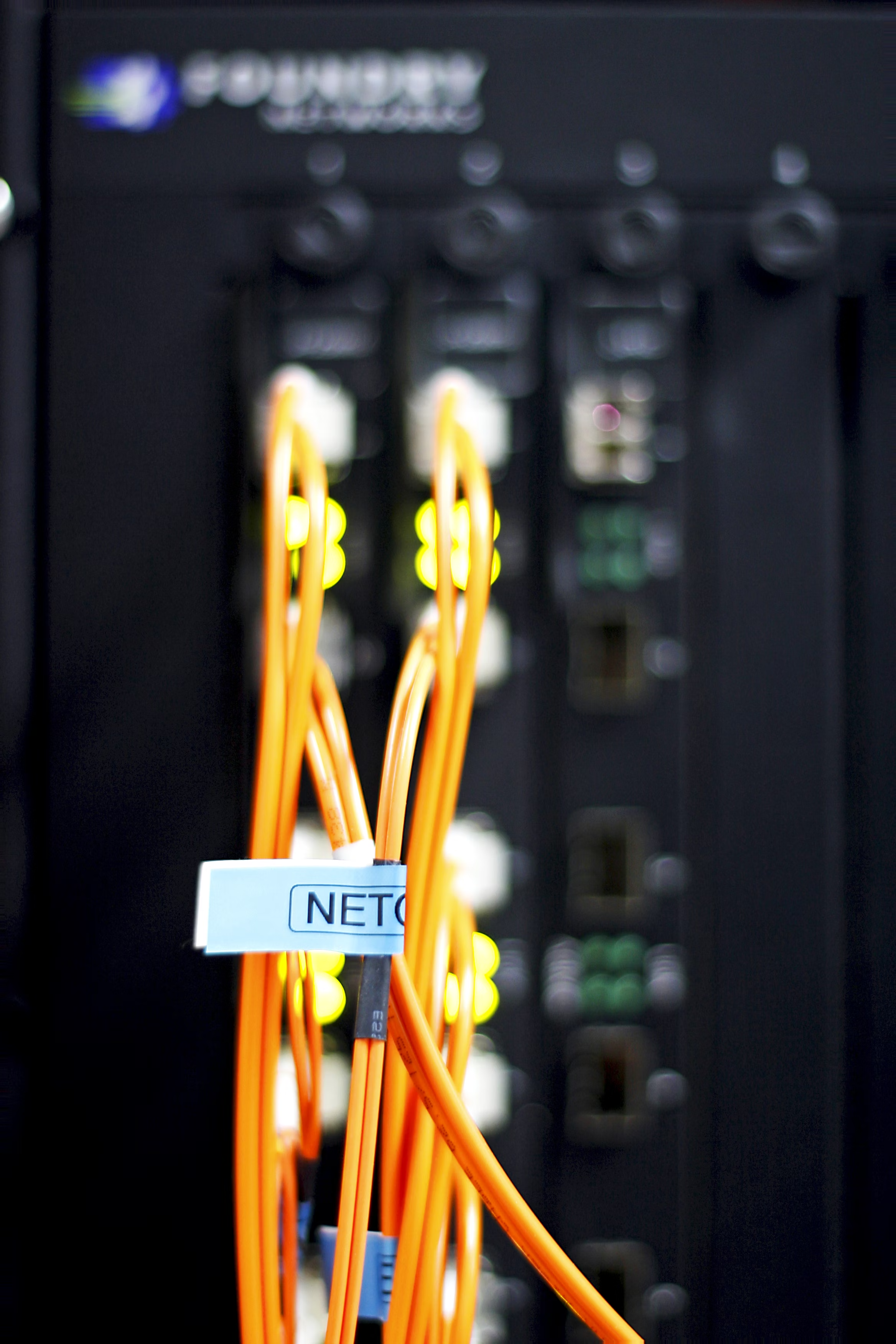
Brief
An optical transceiver is a device used in fiber-optic communication to achieve high-speed data transmission through electro-optical and photoelectric conversion. Typically, an Optical Transceiver comprises two parts: a transmitter and a receiver. The transmitter converts electrical signals into optical signals and sends them through optical fibers. The receiver, on the other hand, converts optical signals back into electrical signals and transmits them to the receiving device. Optical Transceivers are widely used in data centers, telecommunication networks, enterprise networks, and other fields, making them key components of modern high-speed networks.

Industry Trends of Optical Transceivers
Data Center Becomes the Fastest Growing Application for Optical Transceivers
As the backbone of modern digital services, data centers require efficient and reliable connectivity solutions. Optical transceivers provide the required speed, capacity, and scalability to maintain continuous data flow within data centers. Data center networks are rapidly adopting fiber optic technology, and optical transceivers play an important role in these high-capacity networks. Modern data center networks require high-capacity data transmission, driving the market demand for optical transceivers.
North America holds the largest market share
Latin America, especially Brazil and Mexico, is emerging as an important growth region for the optical transceiver market. As these countries increase their investments in data centers and telecommunications infrastructure, the demand for optical transceivers is also growing rapidly. For example, Mexico has made significant progress in promoting the development of its data center infrastructure and is expected to become a major contributor to the optical transceiver market in the region. Brazil is also accelerating the deployment of its 5G network, which will further increase the demand for high-performance optical transceivers.
Key trends in the Optical Transceiver market
Data center growth: As data volumes and technologies such as artificial intelligence and high-performance computing grow in popularity, data center assets require fast, reliable, and cost-effective connectivity.
Application of Fiber Optic Technology: The rapid application of fiber optic technology in data center networks has driven the demand for high-capacity data transmission.
Demands from the North American market: Latin America is becoming a major growth region for the Optical Transceiver market. Increasing internet penetration and the application of advanced technologies such as AI, 5G, and IoT have driven the demand for high data transmission rates. Additionally, 5G deployment and data center investments in Latin America are important factors contributing to this market growth.
Expansion of cloud computing services: As more organizations shift their operations to the cloud, the demand for advanced data centers is increasing, which is driving the development of the Optical Transceiver market.
Major companies' push: The application of companies such as Google, Microsoft and Amazon in data centers has significantly promoted the growth of the optical transceiver market.

Development Trend of Optical Transceivers
High-speed Optical Transceiver
As network demands increase, the speed of Optical Transceivers continues to increase. From the initial 100G and 200G to the current 400G and even the upcoming 800G Optical Transceivers, the increase in speed is one of the important trends in the development of Optical Transceivers. Optical Transceivers with high data rates can meet the needs of data centers and telecommunication networks for large capacity and high speed.
The promotion of 5G technology
The widespread application of 5G technology has driven the demand for Optical Transceivers. 5G networks require a large number of high-performance Optical Transceivers to support their high-speed, low-latency, and large bandwidth requirements. The use of Optical Transceivers in 5G base stations and bearer networks has significantly promoted market growth.
Market growth
Market growth: The Optical Transceiver market shows significant growth potential in Latin America. The region is expected to continue expanding in the coming years, particularly in the fields of data communication and telecommunication infrastructure.
Brazilian Market: Brazil is one of the main drivers of the growth in demand for Optical Transceivers in Latin America. The country's increased investment in data centers has boosted the demand for Optical Transceivers. In addition, it is becoming a manufacturing center for global pharmaceutical companies, which has also promoted the application of Optical Transceivers in biotechnology and medical devices.
Mexican Market: Data center construction in Mexico is rapidly developing, driving the demand for high-performance Optical Transceivers. Additionally, Mexico's healthcare spending accounts for 5.5% of GDP, and the application of Optical Transceivers in medical equipment and technology is also increasing.
Technological innovation: Optical transceiver manufacturers in Latin America are constantly innovating in technology to improve product performance and reliability. For example, some companies are developing more advanced optical imaging devices and systems to meet market demand.
market competition: The Latin American Optical Transceiver market is highly competitive, with major players including Carl Zeiss Meditec AG, ASE Optics, Inc., Cytoviva Inc., etc. These companies maintain their leading position in the market through technological innovation and product development.
Continues to innovate
Optical transceiver manufacturers are constantly innovating in technology to improve product performance and reliability. For example, C-light's Optical Transceivers are known for their durability and long life, enabling efficient data transmission in a variety of network devices and interfaces. The commitment to innovation and quality assurance has made Optical Transceivers highly adaptable and usable in various application scenarios.

Advantage
Optical Transceivers offer advantages such as long transmission distance, high bandwidth, and strong anti-interference capabilities. Unlike traditional electrical signal transmission, optical signals are less affected by external electromagnetic interference when transmitted through optical fibers, maintaining high signal quality. Additionally, the bandwidth of optical fibers is much higher than that of copper wires, supporting higher data transmission rates and making them suitable for long-distance and large data transmission scenarios. These advantages make Optical Transceivers an ideal choice for modern communication networks.
Emerging Markets
Optical Transceivers have great potential in emerging markets such as consumer electronics and industrial automation. The demand for Optical Transceivers in these markets is inscreasing, especially in high-speed data transmission and long-distance communication. With the rapid development of these emerging markets, the application scope of Optical Transceivers will be further expanded, and the market potential is huge.
Policy Support
The support of government policies is also an important factor in the development of the Optical Transceiver market. Governments worldwide have promoted the construction and upgrading of communications infrastructure through policies, which have facilitated the popularization and application of Optical Transceiver technology. These policies have provided a good environment for the development of the Optical Transceiver market and contributed to the long-term growth of the industry.
Various kinds
There are many types of Optical Transceivers, mainly including SFP, SFP+, QSFP, QSFP+ and other types. Different types of Optical Transceivers are suitable for different transmission rates and distance requirements. For example, SFP (Small Form Factor Pluggable) is suitable for Gigabit Ethernet, while SFP+ and QSFP+ are suitable for 10 Gigabit Ethernet and higher rates. Choosing the right type of Optical Transceiver can meet the needs of different network environments and ensure the efficient operation of the network.

Application Areas
Optical Transceivers are widely used in many fields, mainly including data centers, telecommunication networks, enterprise networks and wide area networks. In data centers, Optical Transceivers are used for high-speed connections between servers, storage devices and switches. In telecommunication networks, Optical Transceivers are used for data transmission between base stations and core network equipment. Enterprise networks use Optical Transceivers to achieve efficient communication between internal departments. In addition, Optical Transceivers are also used in wide area networks to connect long-distance communication networks between cities.
Rapid expansion of data centers
The increase in the number and scale of data centers is an important driving force for the Optical Transceiver market. With the development of technologies such as cloud computing, big data, and artificial intelligence, data centers need more high-performance Optical Transceivers to support their huge data traffic and complex computing needs.
The rise of new applications
Emerging application scenarios such as virtual reality (VR), augmented reality (AR), Internet of Things (IoT) and Metaverse have put forward new demands on Optical Transceivers. These applications require Optical Transceivers with high bandwidth, low latency and high reliability to realize their functions, which has promoted the continuous innovation and progress of these technologies.

Future Challenges
Although Optical Transceiver technology continues to advance, it faces several challenges, including cost control, standardizing technical specifications, and ensuring compatibility. As the transmission rates of Optical Transceivers increase, so do production costs, necessitating the discovery of more economical manufacturing processes and materials. Standardizing technical specifications and ensuring compatibility among products from different manufacturers are crucial. Only through rigorous standardization and compatibility testing can the stable operation of Optical Transceivers in various devices and network environments be ensured.

Fully Compatible
Our product boasts wide compatibility, suitable for a variety of devices including switches, routers, firewalls, and network cards from brands such as Huawei, ZTE, H3C, Cisco, Ruijie, HP, among others. It operates stably and delivers efficient data transfer speeds, ideal for both enterprise networks and data centers. Its excellent compatibility and reliability make it an indispensable part of modern network architectures.





















